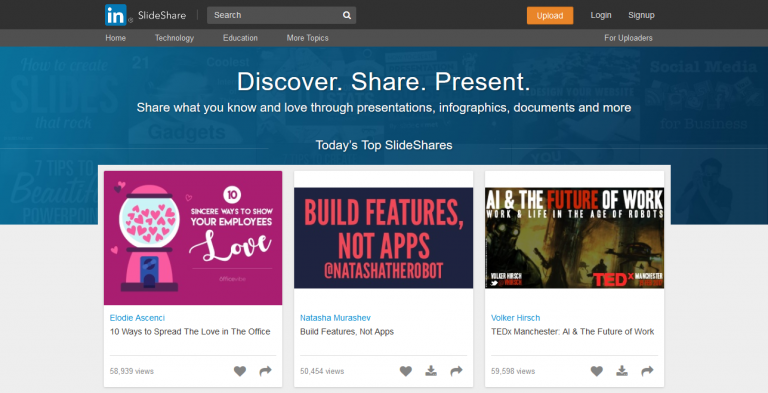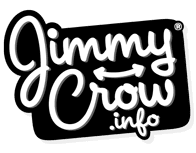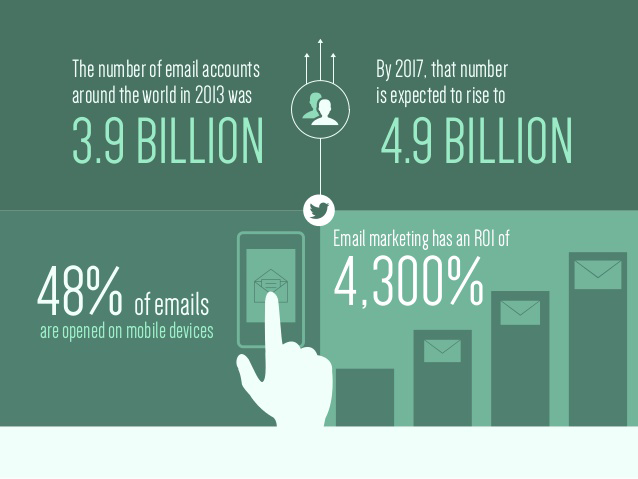Re-post from the ![]() blog
blog
When it comes to generating traffic, the majority of people concentrate solely on Google. There are good reasons to do so. After all, 93 percent of online experiences start with a search engine and Google’s global market share is around 80 percent. So, if your goal is to generate traffic, the search giant seems like your best bet.
However, it is far from the only source of traffic. There are plenty of other online traffic sources out there. Many can bring in significant numbers of visitors. That is, if you take advantage of them.
In this article, we want to look at some lesser known alternatives to Google for online traffic and how you can tap into their potential. This will allow you to diversify your traffic sources and make you less dependent on the big G (in case, God forbid, you ever get hit with a penalty or wiped out by an algorithm update).
Ready to increase your site traffic? Then just keep reading.
Untapped Online Traffic Sources and How to Take Advantage of Them
In the following, we will show you where else online you can find visitors and how to get them to your site.
Blog Comments
Back in the day, commenting was a way to build backlinks. That was when site links from blog comments actually carried weight. It’s also the reason why anyone who has a WordPress site is struggling with automated comment spam.

These days, pretty much everyone has a nofollow attribute attached to their comment links, so this is no longer a valid option (which doesn’t seem to deter spammers though). Even if the links are set to dofollow, comments don’t really carry that much weight for SEO. Plus, they could even get you penalized if comment backlinks are the only links to your site.
However, comments have other benefits. If done right, they can help demonstrate your expertise, build your brand and lead others back to your site. Plus, leaving meaningful comments on other blog posts will put you on the radar of other bloggers in your niche. Besides learning more about your audience that is.
While one comment won’t make much of a difference, they can have a cumulative effect. Don’t believe me? Well, Neil Patel managed to generate $25,000 from 249 comments. Not bad, right?
If you want to give it a try, here’s how to make the whole commenting for traffic work:
- Be first — Stay on top of popular blogs in your industry and try to be the first to add a comment on new blog posts. That gives you a lot of visibility as many people will scroll at least that far. It also makes it more likely others will be tempted to click through to your site.
- Be good — When you do leave a comment, make sure it adds value. Refer to points made in the post and add important information to the discussion. If you have references or hard data, even better!
Also, be sure to keep an eye on who links to your website. If one of your articles is mentioned somewhere else, be sure to swing by and leave a thank you in form of a comment. Of course, don’t forget to answer comments on your own blog and under guest posts on other sites!
I admit, email is far from an unknown method to generate traffic. However, in the quest for pleasing Google, many underestimate the power of this online traffic source.
Email is one of the most direct connections to your audience. Anyone who trusts you enough to cough up their email address is likely to click on the links you send them. Plus, there are many more email accounts than there are users on social media networks. That means starting an email list gives you access to a huge user base.
However, to take advantage of this traffic source, you first need to get people onto your list. Here’s how to do it:
- Prepare a bribe — If your content is good, many people will be happy to jump on your email list just to get more of it. However, having a bonus in place for signing up makes it much more likely. This can be an ebook like the headline hacks on Smart Blogger or a content upgrade for your most popular posts.
- Add signup forms to your site — These days there are many ways to capture leads, not just the ubiquitous sidebar sign-up form. We have slide-ins, popups, welcome mats and much more at our disposal including exit-intent technology that shows popups when visitors are about to leave. SumoMe and OptinMonster are excellent to implement these.
- Create a welcome email — Onboarding subscribers is also important. If someone has signed up to your list, the least you can do is personally welcome them. While you are at it, why not show what you have to offer? Send your best content, ask them questions or just introduce yourself and tell them to get in touch if they need anything. It will make a difference.
Of course, there are other skills that are important for email marketing, such as writing killer subject lines but the above will get you started.
Image Sharing Sites
Images are another great way to generate traffic for your website. We have already mentioned how to make them more SEO friendly in this article. Yet, again, that’s an attempt to get more traffic from Google and other search engines and our explicit goal here is to find alternatives.
However, there is another opportunity to use your images to generate traffic: image sharing sites. They have massive user and traffic numbers, not to mention awesome page rank. Here are just some examples:
- Instagram — 600 million users
- Pinterest — 150 million users
- Flickr — 122 million users
- Imgur — 150 million users
- Deviantart — 38 million users
Needless to say, these sites represent a lot of potential traffic as many of them allow you to link back to your site and thus send visitors your way. Especially if images are part of your content strategy, you should consider investing in these traffic sources. Here’s how to do it:
- Include a website link in your bio — When you sign up to any site, make sure to add a link back to your website to your bio. That’s best practice for any social media platform, otherwise how are users supposed to find you?
- Use the tools at hand — Different websites allow you to use all kinds of tools to make images more findable. For example, Instagram has hashtags and Flickr uses tags, so be sure to include them in your images. Many sites also offer ways to interact with other users. Learn how your platform of choice operates so you can fully take advantage of it.
- Include links in posts — When you post images (or videos), make sure to include your link there, too. First of all in the description but also possibly inside the images itself. You can create images with text overlay and a call to action to come to your site or consider watermarking your pictures.
- Ask for backlinks — Flickr is often used by people to find images for their own content. Creative commons licenses make it possible. A tactic to get backlinks to your site is to add a call to action to your image description that allows others to use your image but asks for an attribution link to your website. If you upload quality pictures, this can really help your SEO.
For more information on how to drive traffic from image sharing sites, check out these articles:
- How To Drive Massive Referral Traffic From Pinterest In 2015
- Inspired Magazine – How to grow your website traffic through Reddit, Imgur and DeviantArt
- Social Media Examiner – How to Drive Website Traffic With Instagram
Apart from that, you can use these tools like Pablo and Canva to create images in the first place.
Document Sharing Sites
What works for images, also works for documents. We have already talked about repurposing your content and blog posts as PDFs and presentations in advanced SEO tactics. That way you can share them on Slideshare and other sites.

These sites are similar to their image sharing counterparts in terms of page rank, credibility and user numbers. For example, Slideshare sports a healthy 70 million users.
But does it work? Why yes, it does.
For example, Ana Hoffman managed to generate over 200k views in 30 days with just nine presentations. Here’s how she did it:
- Pick a trending topic — Either find a topic that is performing well at the moment or look to your old blog posts to see what your visitors are especially interested in.
- Create an outline — Edit your blog post down to the essentials to make it fit the presentation. You want to end up with bite-sized information for every page.
- Include keywords — Keywords are important so your presentation can be found. Include them in your file name, pages, title, description and tags.
- Use images — Images say more than a thousand words and make your file more engaging. Check our list of free image sources if you don’t know where to get quality visuals.
- Include a call to action — At the end of document, make sure to include a CTA and address of your site. Otherwise, how would readers know to come there? You can include clickable links and buttons to send them wherever you want. Your site, a landing page, follow-up post, social profiles or else.
For more detailed instructions, read the case study cited above. You can also post your documents to other sites like:
Facebook Ads
Not all online traffic sources are free- Some of them require you to shell out money. I understand the preference for free traffic but depending on your website or business, it can also make sense to invest in paid alternatives.
In fact, there are a bunch of bloggers who regularly invest in ads on Facebook to spread their content further (for example, this one). The reason: the decline of organic reach for Facebook pages (that we are all frustrated by).
However, you can make up for it even with moderate spending. Facebook offers very specific targeting and even A/B testing for different images and copy. If you want to get started, in addition the article above, use these resources:
- Hootsuite – How to Advertise on Facebook: A Beginner’s Guide
- Buffer – The Complete Guide to Getting Started with Facebook Ads
- Neil Patel – Facebook Advertising Made Simple: A Step-by-Step Guide
Your Email Signature
Finally, a simple tip: Add a link to your blog or latest blog post in your email signature.
Sounds stupid, right? But think about it. How many emails do you send out each and every day? If you are anything like me, at least dozens.
Now imagine every single one of them was a tiny ambassador for your site. Sounds like it could have a cumulative effect over time, doesn’t it?
The best thing: You don’t even have to add it manually. Instead, you can use an app like Wisestamp that includes it automatically for you. You’re welcome.
Final Thoughts on Online Traffic Sources
Generating traffic for their website is the main goal of anyone with a web presence. Most concentrate on Google and for good reason. However, it also puts them at risk and ignores other online traffic sources with high potential.
As you have seen in this article, there are others out there with millions of potential visitors. Diversifying your traffic sources will help increase your site traffic and tap into new potential.
That doesn’t mean you should ignore normal SEO, not in the slightest. However, using alternatives will help you spread your content wider and farther than before. And that can’t be a bad thing, can it?

